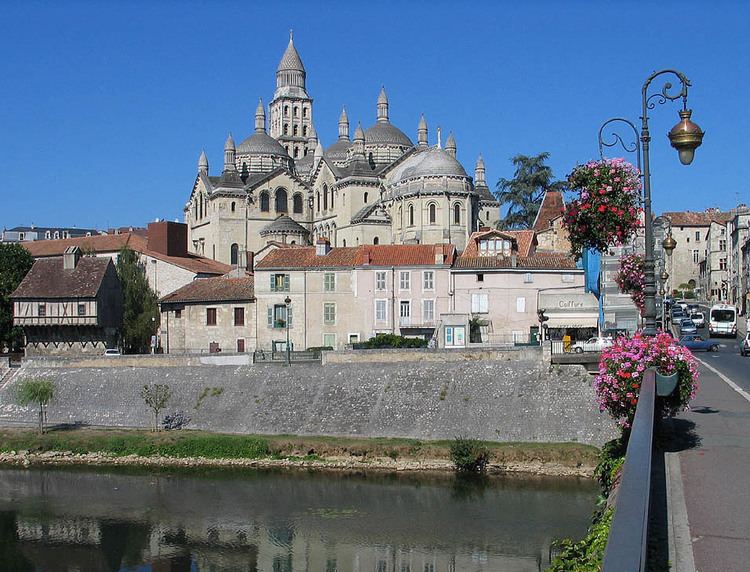Country France Population (2008) 29,080 Area 9.82 km² Number of airports 1 | Time zone CET (UTC+1) Local time Monday 2:41 AM | |
 | ||
Weather 10°C, Wind SW at 5 km/h, 90% Humidity Points of interest Périgueux Cathedral, Vesunna Gallo‑Roman Museum, Musée d'art et d'archéol, Château Barrière, Tour de Vésone | ||
Périgueux ([peʁiɡø]; Occitan: Peireguers [pejɾeˈɣɥes, pejɾeˈɡœː] or Periguers [peɾiˈɣɥes, peɾiˈɡœː]) is a commune in the Dordogne department in Nouvelle-Aquitaine in southwestern France.
Contents
- Map of PC3A9rigueux France
- History
- Geography
- Sights
- Cathedral
- Transport
- Personalities
- Twin towns Sister cities
- References
Map of P%C3%A9rigueux, France
Périgueux is the prefecture of the départment. It is also the seat of a Roman Catholic diocese.
History
The name Périgueux comes from Petrocorii, a Latinization of Celtic words meaning "the four tribes" – the Gallic people that held the area before the Roman conquest. Périgueux was their capital city. In 200 BC, the Petrocorii came from the north and settled at Périgueux and established an encampment at La Boissière. After the Roman invasion, they left this post and established themselves on the plain of L'Isle, and the town of Vesunna was created. This Roman city was eventually embellished with amenities such as temples, baths, amphitheatres, and a forum. At the end of the third century AD, the Roman city was surrounded by ramparts, and the town took the name of Civitas Petrocoriorum.
In the 10th century, Le Puy-Saint-Front was constructed around an abbey next to the old Gallo-Roman city. It was organised into a municipality around 1182.
During the year 1940, many Jews from Alsace and Alsatians were evacuated to Périgueux.
Simone Mareuil (a lead actress from the surrealist film Un Chien Andalou) committed self-immolation on 24 October 1954 by dousing herself in gasoline and burning herself to death in a public square in Périgueux.
Geography
The Isle flows through Périgueux.
Sights
Sights include: the remains of a Roman amphitheatre (known locally as the arènes romaines) the centre of which has been turned into a green park with a water fountain; the remains of a temple of the Gallic goddess "Vesunna"; and a luxurious Roman villa, called the "Domus of Vesunna", built around a garden courtyard surrounded by a colonnaded peristyle now housed in the Vesunna Gallo-Roman Museum.
Cathedral
The cathedral of St Front was built after 1120 and restored in the 19th century.
The history of the church of St Front of Périgueux has given rise to numerous discussions between archaeologists. Félix de Verneihl claims that St Front's was a copy of St Mark's Basilica in Venice; Quicherat, that it was copied from the church of the Holy Apostles of Constantinople. M. Brutails is of the opinion that even if the style of St Front's reveals an imitation of Oriental art, the construction differs altogether from Byzantine methods. The dates 984–1047, often given for the erection of St Front's, he considers too early; he thinks that the present church of St Front was built about 1120–1173, in imitation of a foreign monument by a native local school of architecture which erected the other domed buildings in the south-west of France.
The local architect, Paul Abadie (1812–1884), was responsible for radical changes to St Front's which are no longer appreciated by architects or local residents who prefer the purer Romanesque church of Saint-Étienne de la Cité, the former Cathedral of Périgueux.
The cathedral is part of the World Heritage Sites of the Routes of Santiago de Compostela in France.
Transport
Périgueux railway station offers connections to Limoges, Bordeaux, Brive-la-Gaillarde, and other regional destinations.
Personalities
Périgueux was the birthplace of:
Twin towns – Sister cities
Périgueux is twinned with:
